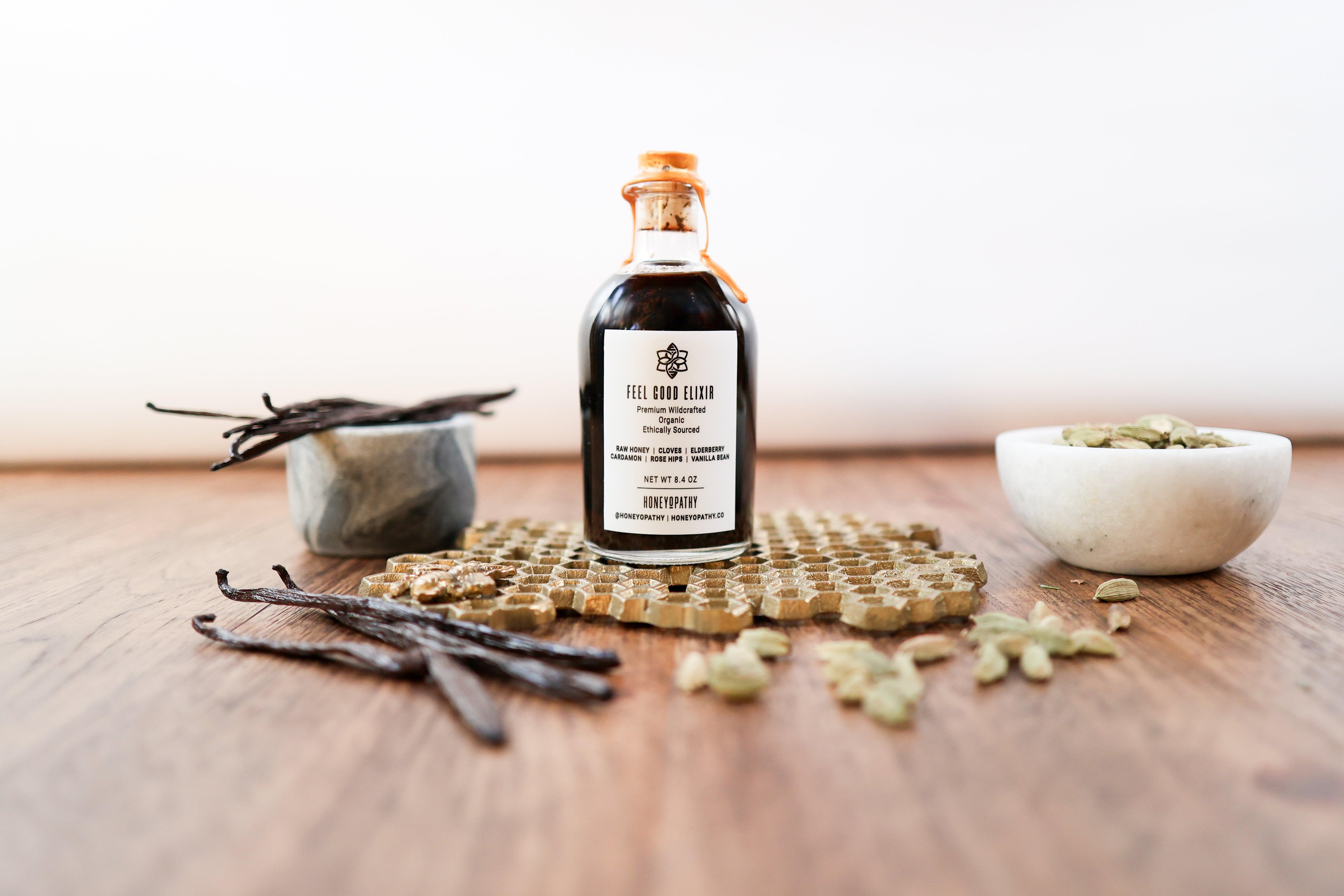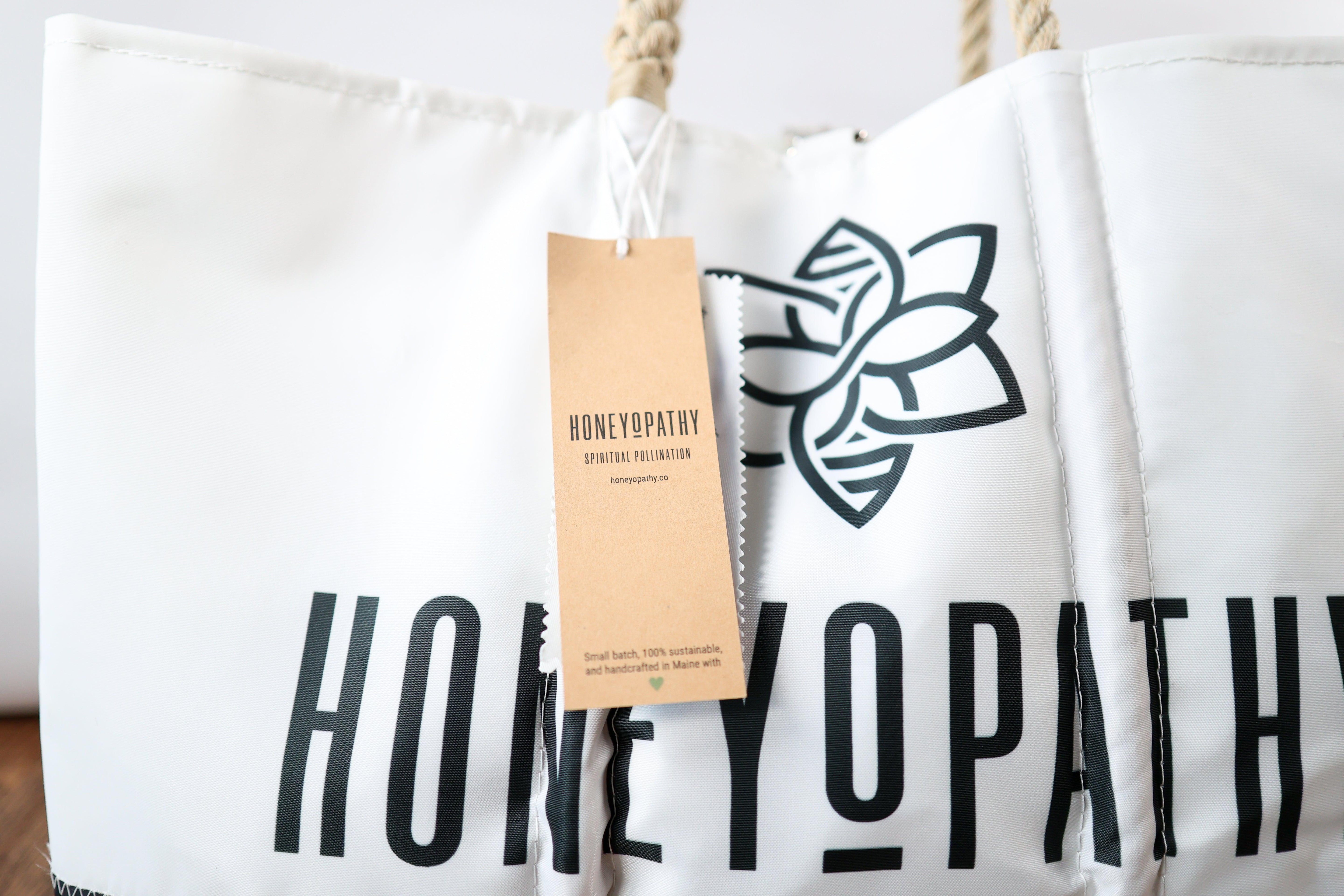In the past, we weren't afforded high quality teas. We had one a few choices of tea and they were mostly black teas pre-packaged and laced with preservatives and pesticides. Organic loose leaf herbal teas couldn't even be imagined! Today, we have endless choices and can even make loose leaf blends ourselves using dried herbs we pull from our gardens. But choosing the right combination of herbs for our constitution and season is challenging. Without that knowledge we are not maximizing the powerful health benefits when combined and consumed.
Organic Loose Leaf Herbal Tea: The Basics
Loose Leaf Tea vs. Bagged: Compared with bagged teas which typically source a much lower grade of herbs, require significant processing of herbs (dusting, crushing, and leaf breaking) to package into tea bags, loose leaf tea as a result is significantly better in flavor and quality. Moreover, loose leaf tea is better for the environment since you can compost the tea without any waste. Best of all, since the leaves aren’t crammed into a bag, they preserve their original flavor and scent and these true infusions are much more flavorful and the scents are delightful!
Types of Loose Leaf Teas: There are significant health benefits to drinking all types of loose leaf teas but there are significant differences as well.
-
Black Tea: a true tea, is dark in color from the complete oxidation of the leaf before firing. Typically, black tea (as a true tea) comes from the Camellia Sinensis plant and is stronger, bolder and richer than most other teas. All true teas as a result contains caffeine.
Health benefits: digestion, heart health, energy, and immunity.
Steep time: 4 minutes. -
Yellow Tea: as another true tea, is not typically sold in domestically. It requires a laborious process of micro-fermentation or yellowing and wrapping using the highest quality leaves. In China, this tea was reserved for royalty and requires a tea master (a dying breed).
Health benefits: antioxidant, dental health, metabolism regulation, and cancer fighting.
Steep time: 3 minutes -
Green Tea: also made from Camellia Sinensis leaves and buds but have not undergone the same withering and oxidation process used to make oolong and black teas. Green tea originated in China but is widely available in other countries.
Health benefits: heals wounds, aids digestion, improves heart and mental health, and regulates body temperature.
Steep time: 3 minutes -
Herbal Tea: for the most part, not from the Camellia Sinensis plant, herbal tea is an infusion of any edible plant and is caffeine-free. It can include a full range of ingredients including tree bark, wildflowers, leaves, roots, spices, seeds, and fruit. Traditional Chinese Medicine has been using herbal teas to heal ailments and afflictions dating back to 2737 BC. Our homeopath has blended 5 organic loose leaf herbal teas for our seasons and elemental states.
Health benefits: Extensive depending upon the blend (and our blends are truly unique).
Steep time: as long as you like to taste -
White Tea: another version of the Camellia Sinensis plant containing young or minimally processed leaves which results in a milder flavor profile. White tea contains polyphenols, a set of phytonutrients and the amounts vary based on the tea plant from which the tea was picked, the cultivation technique, and the way in which the tea was processed.
Health benefits:Cholesterol, reproductive health, weight loss, brain health. Steep time: 3 minutes -
Oolong Tea: falls somewhere in the middle of black tea and green tea based on the fact that it is oxidized more than green tea (but less than black tea). Oolong means "black dragon" in Chinese an in China Oolong Tea is rolled into tight balls which can affect the flavor and aroma of the tea.
Health benefits: Diabetes, inflammation, weight loss, brain health.
Steep time: 3 minutes - Pu-Erh Tea: also from the leaves of the Camellia Sinensis plant yet goes through a another unique process of aging, oxidation and fermentation. With a more robust, earthy taste that likens that of coffee, it also has a higher caffeine content. The most common teas are chai and cocoa blends.
- Ingredients have to “sustain and enhance the healthy soil, animals, plants and people”
- Ingredients should be “based on living ecological systems” is supposed to be fair
- Ingredients should “protect the health and well-being of current and future generations and environment”
Basically, the land has to be pesticide, herbicide, and chemical-free for three years prior to certification and can't contain any engineered nano-particles or GMOs. All of this should increase the potency and health benefits of tea but it does not include the soil, air and water quality but it's still much better than without this certification.
Understanding Herbal Loose Leaf Tea Blends
In Classical Chinese Medicine and the Elemental Theory, the unique blend of herbal or botanical ingredients where each ingredient builds off the other to create a certain potency and health benefit. Only practitioners can blend these ingredients to achieve the desired results. Each season is associated with certain health cycles and therefore requires a diet that supports it.
EXUBERANCE 木 FROM THE WOOD ELEMENT
Spring
Liver-friendly food sources
Sour/sweet flavors
Herbal Blend: Damiana Leaf, Dandelion Root, Nettle Leaf, Honey Bush, Grapefruit Peel
BLISS 火 FROM THE FIRE ELEMENT
Early Summer
Heart-friendly, calming and cooling food sources
Bitter/light/mildly sour flavors (instead of spicy or sweet)
Herbal Blend: Strawberry, Holy Basil, Rose, Hibiscus
HARMONY 土 FROM THE EARTH ELEMENT
Late Summer
Spleen and stomach (for digestive health)
Naturally Sweet flavors with dampness-reducing, cooling, yellow-toned food sources
Herbal Blend: Chamomile, Chrysanthemum, Yarrow, Ginger Root, Goji Berry
ABUNDANCE 金 FROM THE METAL ELEMENT
Autumn
Lung health
Aromatic flavors with Yin-nourishing, moistening, and white-toned food sources
Herbal Blend: Ashwaganda, Eleuthero Root, Palo Santo, Vanilla
VITALITY 水 FROM THE WATER ELEMENT
Winter
Kidney health
Salty and sweet flavors that replenish and nourish, Yang, warming, black-toned food sources
Herbal Blend: Mugwort, Lavender, Blueberry, Cranberry, Lemon Verbena, Peppermint
References:
[1] https://www.soilassociation.org/about-us/organic-principles/



















Leave a comment